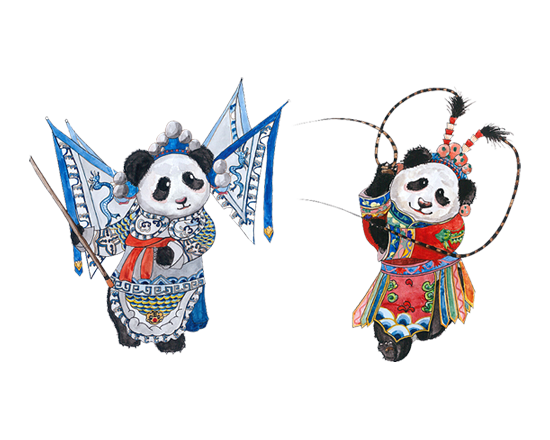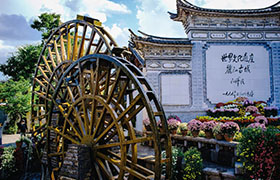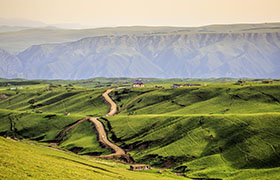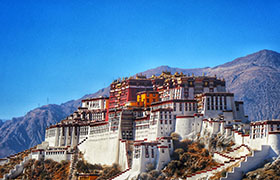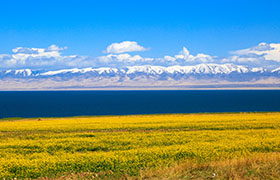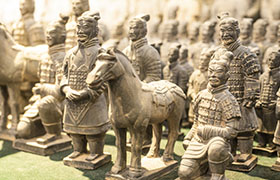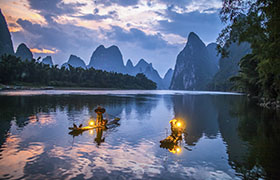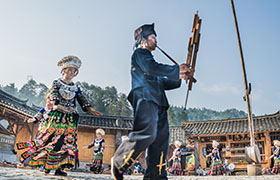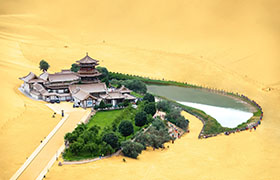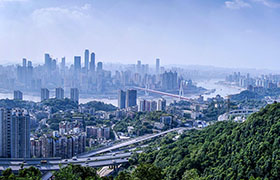Sichuan
Called the Land of Abundance, Sichuan is in diversify natural resources and rich cultural heritages.Central Sichuan is home to the giant panda, the most famous face in China. In the south, expect a veil of history and a muted beauty that sees far fewer travellers than the rest of the region.To the north the visage changes again into a fairyland of alpine valleys and blue-green lakes. Sichuan’s Tibetan face appears as you venture west. A vast landscape of plateau grasslands and glacial mountains where Tibetan culture still thrives and you’re certain to have your most challenging, yet most magical, experiences.
Yunnan
As the most diverse province in all China, The extraordinary mix of peoples and splendour of its landscapes create superlative sights and many different ethnic groups, which made Yunnan the trendiest destination for China’s tourist industry.
More than half of the country’s minority groups reside here, providing a glimpse into China’s hugely varied mix of humanity. Then there’s the eye-catching contrasts of the land itself: dense jungle sliced by the Mekong River in the far south; soul-recharging glimpses of the sunset over rice terraces in the southeastern regions; snow capped mountains as you edge towards Tibet.
Xinjiang
Xinjiang is the homeland of the Muslim Uyghurs and a fast-changing region where ancient and modern grind up against each other in surprising ways. The regional capital Urumuqi is a forest of high-rise apartments while in parts of the Silk Road oases of Kashgar, Hotan and Turpan, life goes as it has for centuries, based around the mosque, the tea house and the bazaar.Xinjiang is increasingly attracting visitors for its extraordinary natural beauty and fascinating Central Asian history and culture. a visit to Chinese Turkestan makes for an exploration of China's past and its unsettled multicultural present.
Tibet
Tibet offers fabulous monasteries, breathtaking high-altitude walks, stunning views of the world’s highest mountains and one of the most likeable cultures you will ever encounter.For many people, the highlights of Tibet will be of a spiritual nature: magnificent monasteries, prayer halls of chanting monks, and remote cliffside retreats.The pilgrims from local grandmothers murmuring mantras in temples heavy with the aroma of juniper incense and yak butter to hard-core visitors walking or prostrating around Mt Kailash -are an essential part of this appeal.It's fascinating, inspiring and endlessly photogenic.
Qinghai
Big, bold and beautifully barren, Qinghai, occupies a vast swath of the northeastern chunk of the Tibetan Plateau. As far as Tibetans are concerned, this is Amdo, one of old Tibet’s three traditional provinces. Much of what you’ll experience here will feel more Tibetan than Chinese; there are monasteries galore, yaks by the thousands and nomads camped out across high-altitude grasslands.
Most of travelers swarm to Qinghai mostly for the stunning landscape of the Qinghai Lake - quiet and endless lake, pure and blue sky with some slides of clouds, green grasslands, blooming sea of rape flowers, devout pilgrims...
Shanxi
Shaanxi is where it began for China. As the heartland of the Qin dynasty , whose warrior emperor united much of China for the first time, Shaanxi was the cradle of Chinese civilisation and the fountainhead of Han culture. Xi’an marked the beginning and end of the Silk Road and was a buzzing capital long before anyone knew of Beijīng and its Forbidden City.
Shaanxi’s archaeological sites make it an essential destination. Around Xi’an there’s an excavated Neolithic village and royal graves, including the tomb of Qin Shi Huang and his Army of Terracotta Warriors, one of the world's foremost heritage sites.
Guangxi
The picturesque scenic spots in Guangxi are famous worldwide, symbolized by Guilin, a natural beauty produced by unique karst geography. Guangxi conjures up visions of cycling and bamboo-rafting upon shimmering river waters beneath the sublime karst peaks of Yangshuo and hiking between ethnic villages in the lofty Longji Rice Terraces. That's not all though: you can take selfies in front of the dramatic Danxia landscape (a type of landform) at Tianmen Mountain and Bajiaozhai National Geopark, and get sprayed by the mighty waterfall of Detian or splashed by live seafood in Beihaii's Vietnamese quarter.
Guizhou
It's hard to call Guizhou underrated as a travel destination when it's largely unknown to travellers outside China entirely. The province has two of the country's largest and most spectacular natural features - a waterfall and a cave - while outside the capital, Guiyang, it's pretty much green hills and valleys, flowing rivers and limestone formations to the horizon. Guizhou's people are as diverse as its environment. Around 37% of the province’s population consists of more than 18 ethnic minorities. Flitting around the Dong and Miao villages in the east of the province is like an anthropological dream sequence.
Gansu
Synonymous with the Silk Road, Gansu flows east to west along the Hexi Corridor, the gap through which goods and ideas once streamed between China and Central Asia. The constant flow of commerce left Buddhist statues, beacon towers, forts, chunks of the Great Wall and ancient trading towns in its wake. Gansu offers an entrancingly rich cultural and geographic diversity. Historians immerse themselves in Silk Road lore, art aficionados swoon before the wealth of Buddhist paintings and sculptures, while adventurers hike through desert rockland and tread along high-mountain paths well worn by Tibetan nomads.
Chongqing
There's a frontier-town vibe to Chongqing City, one of the most booming metropolises on earth. Despite a history that dates back to the ancient Ba kingdom,this former walled fortress has a distinctly brash feel.The city sprawling down both banks of the Yangzi River for kilometres – with further development ongoing – but very little remains of old Chongqing. Yet the city has a unique energy that makes it a fascinating place and the locals are some of the most welcoming in all China. The gritty docks, too, are a permanent reminder of how Chongqing's fortunes have long been tied to the river that flows through it.

